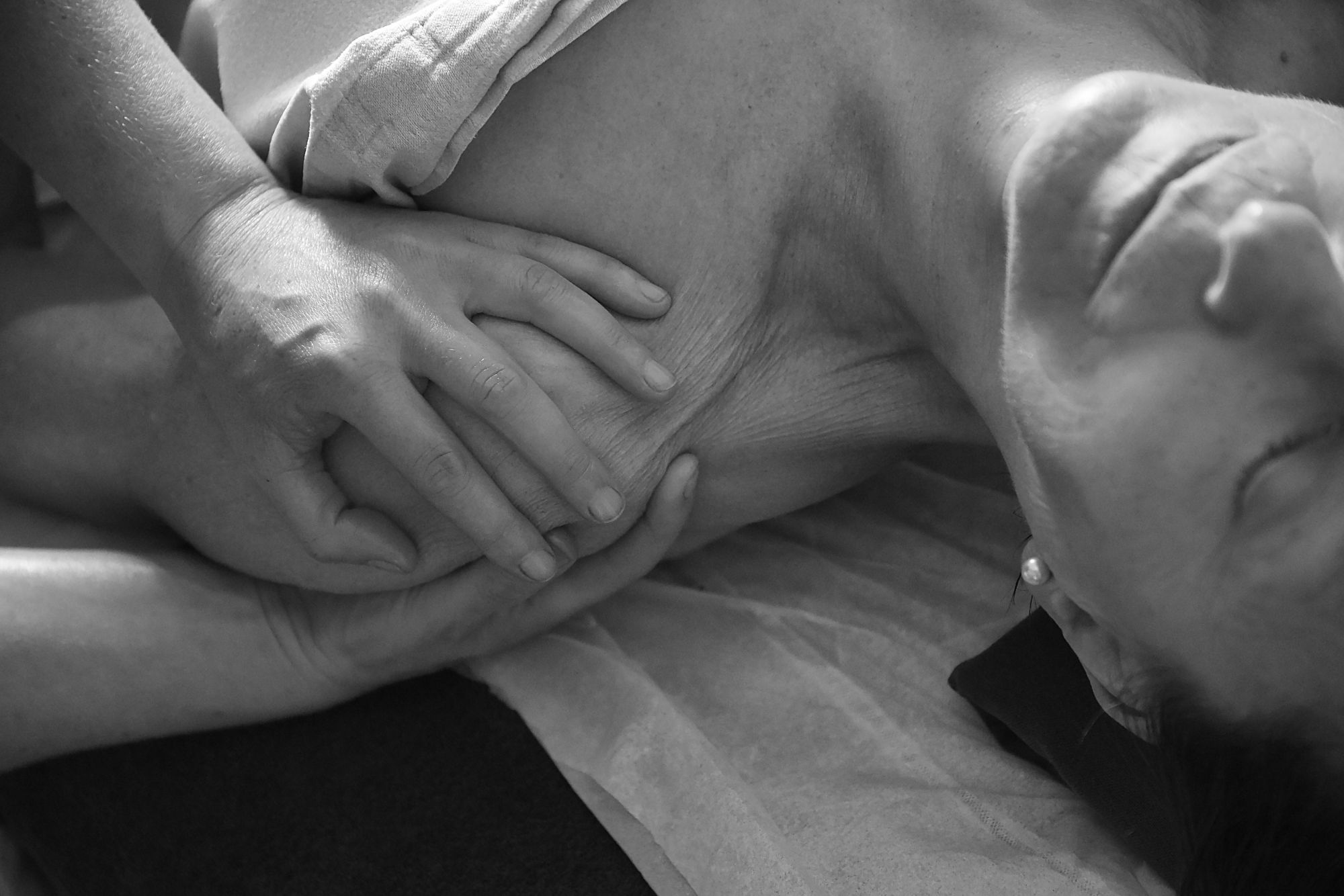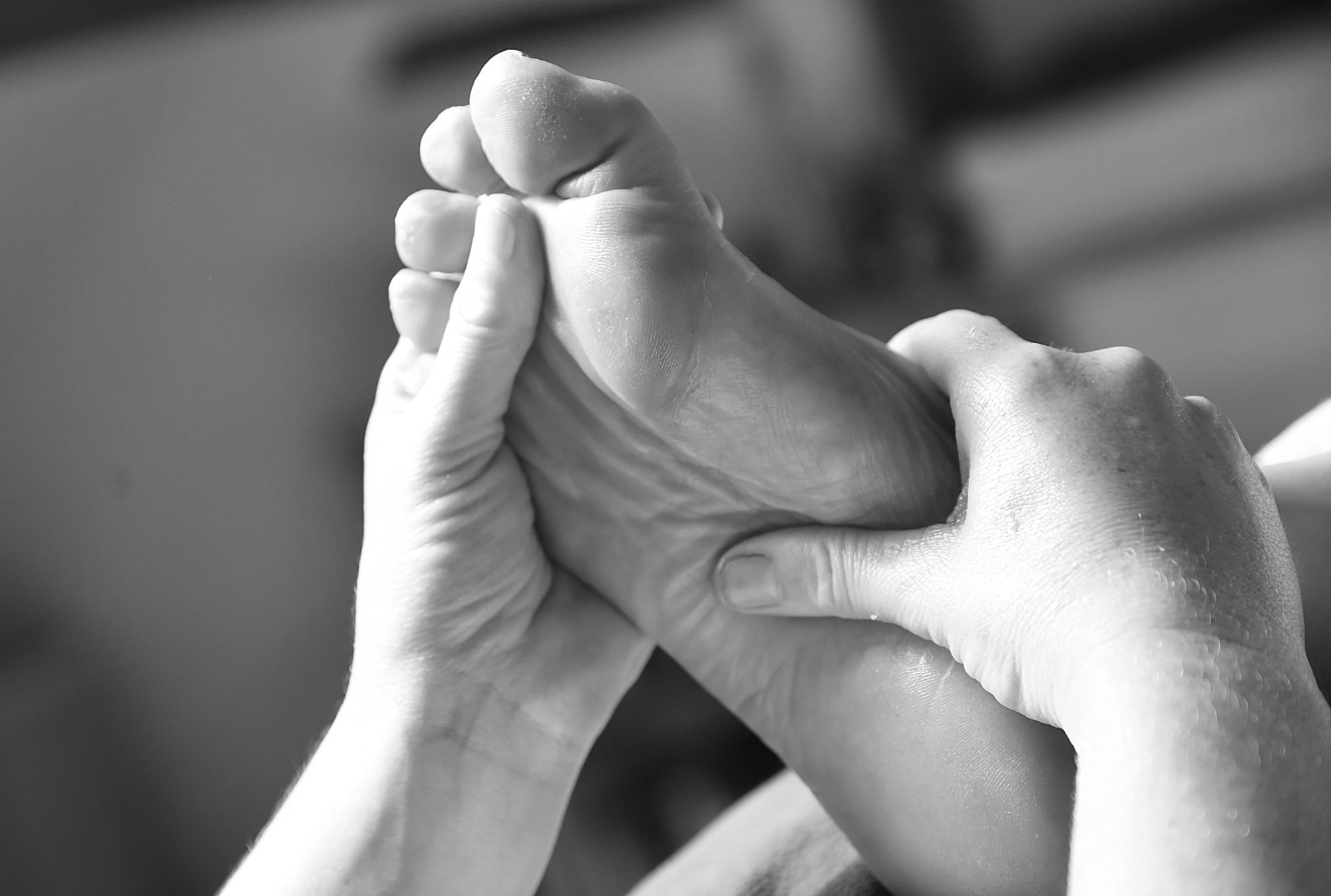Myofascial Release Therapy
What is fascia?
Fascia is a connective tissue within the body, it is web-like in its structure and it forms a continuous three-dimensional network throughout the whole body; covering and penetrating muscles, bones, blood vessels, nerves and all of our organs. The continuity of its structure helps us to interpret and visualise the direct connection between seemingly “separate” parts of our bodies. It is now recognised that the fascial network is one of our richest sensory organs, it communicates and organises the responses of the tissues.
Myofascia refers to the fascia that connects directly with the muscles; this plays a central role in our structure and function. In order to understand it’s role fully we need to step away from the mechanical analogies often applied to physical function, of muscles and bones as levers and pulleys and consider a “biotensegrity” model, which sees the whole system working together to initiate movement, absorb pressure and make postural choices.
The fascial system has great capacity for memory, and restrictions can come about through trauma, inflammatory responses, surgical procedures, repetitive body use and postural habits. This can lead to pain, dysfunction and lack of mobility. Unfortunately many people are unaware of the relevance of their fascia in this situation because it isn’t visible in x-rays MRI’s or other scans and so it can remain undetected.
The good news is that fascia responds extremely well to hands-on release therapy.

“I came away with a knowing that somehow I’m inhabiting my body more fully and deeply than before. I feel such gratitude to experience the safety and care of the healing touch that you bring to me – who’s primal experience was so very different”

“Carina and the treatments have helped me on my healing journey tremendously, realising what I have been holding onto in my body through trauma and illness to gradually make peace and let go of what isn’t doing me justice anymore”
What to expect from a myofascial release (MFR) treatment
First of all, we will have a full consultation to develop an understanding of what needs attention in your body right now. I will ask about significant life events, injuries, surgeries, medical history and what is going on for you at this point in time. Where appropriate, I will also do a postural observation to establish your range of movement and alignment. Together we will define a treatment strategy and from there we will see what the body has to tell us during treatment.
Fascia responds slowly, so the treatment is always at a pace that honours the gradual release of the tissues. Most of the techniques are performed without the use of oil and are directly onto the skin.
The most important quality of MFR is that you feel safe and at ease with the process of release; it is done with you not to you and the dialogue between the therapist’s hands and your body must feel safe, positive and relevant to you the whole time.
As the connectedness of the tissues implies, MFR is a therapy that works with the whole person; body, mind, and emotional self are recognised as integrated and inseparable so it is quite usual to experience change on many levels.
Often an emotional response accompanies a physical release, as much of what is held in our body is as a result of unexpressed emotions. Bringing an awareness of this to your treatment can help you to uncover the patterns that are present for you and help you get the most from your MFR sessions